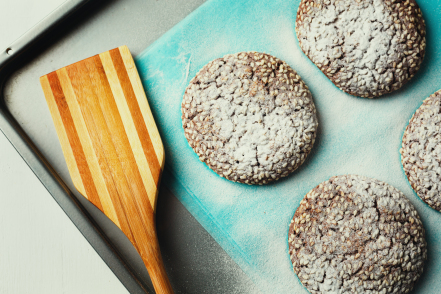Baking Cookies At A High Altitude: What To Do and Why
Baking cookies at a high altitude is less complicated than adjusting to altitude for cakes or breads. Cookies are smaller than other baked items. They also require shorter baking time. Higher fat content and less fluid make cookies less temperamental at high altitudes, too.
Nevertheless, high altitudes offer challenges in the kitchen. The Elf offers these tips so that your cookies can turn out perfectly and you can enjoy them, no matter where you live.
Why Baking at a High Altitude Is Different
High altitude is considered to be 3,000 feet or more.
Air pressure decreases as the elevation increases. The higher up you live, the lower the air pressure in your kitchen. Because of that, ingredients in cookies respond differently than they do at lower altitudes and the baking process changes a bit, too.
Furthermore, if you reside at a high altitude you may find that you need to adjust cookie recipes to suit your specific conditions – both the ingredients and baking procedures. Different altitude heights impact ingredients and baking in different ways. For instance, if you live at 3,500 feet you will likely make different adjustments to cookie recipes than if you live at 5,700 feet.
Experiment to find out how cookies respond when you make adjustments in your region. Try small modifications at first. Adjust as needed until you find the right combinations for your situation.
Basic Principles to Follow When Baking Cookies at a High Altitude
For Ingredients
Decrease leavening agent
Increase fluid
In Baking Procedures
Increase baking temperature
Decrease baking time
Adjustments for Ingredients
Leavening Agents
Baking powder, baking soda, and egg whites are main leavening agents used in cookies. When activated in dough, they create foam, which in turn releases gasses into the dough causing it to expand.
How does this affect cookies? Lower air pressure (at high altitudes) means less weight pressing down on cookie dough. Because of that, leavening agents tend to release gases more quickly at higher altitudes than at normal altitudes. By the time cookies are done, most gasses have expanded and already escaped from the cookies. Bottom line: your cookies flatten. You can counteract the too-quick action of leaven at high altitudes by experimenting with adjustments so cookies don’t rise too quickly.
High-Altitude Adjustments
- Baking powder and baking soda: decrease amount by 15% 25%
- Egg whites: beat to soft-peak consistency rather than stiff-peak consistency
Liquid
Most cooks increase oven temperatures at a higher altitude (see below) so liquid in your cookie dough evaporates quicker. Extra liquid keeps products from drying out at higher temperatures.
High Altitude Adjustment
- Increase liquid by 1-3 tablespoons, experimenting first with
the small end of the spectrum.
Adjustments to Baking Procedures
Oven Temperature
Leavening and evaporation are quicker when baking cookies at a high altitude. A higher oven temperature helps cookies to set before they expand or get too dry.
High Altitude Adjustment
- Increase oven temperature by 15º to 25º degrees – less if the dough contains chocolate, which has extra fat.
Baking Time
Higher oven temperatures mean cookies bake faster.
High Altitude Adjustment
- Decrease baking time 20-25%, which translates into 5-8 minutes for every 30 minutes.
More on Baking Cookies How-Tos
Baking cookies: how-tos make it easy ...
Chocolate Chip Cookie FAQs: baking tips for America's favorite cookie ...
Different types of cookies and how to classify them ...
How to keep marshmallows fresh after you've opened the bag ...
How to read and follow a cookie recipe ...
How to modify cookie recipes ...
How to scoop cookie dough: 3 ways to try ...
How to spread cookie dough for bar cookies and layer cookies ...
Tips for cutting bar cookies and brownies cleanly and evenly ...
How to Make Christmas Cookie Icing (AKA Royal Icing) ...
Baking terms to know when baking cookies ...
Baking Tips for Baking Cookies
Baking cookies tips: The Elf's hints for best Christmas cookies ...
Baking Gear for Baking Cookies
Kinds of baking pans to use when baking cookies ...
Baking sheets: how to choose them for baking cookies ...
Different types of cookies: how to classify them ...
Return from Baking Cookies at a High Altitude to The Cookie Elf home
Find A Cookie Recipe or Cookie Baking Tip
The Cookie Elf
FREE! 6 Easy Cookies Recipes for Kids and Families
Get your free copy here or when you fill in the form below.





New! Comments
Have your say about what you just read! Leave me a comment in the box below.